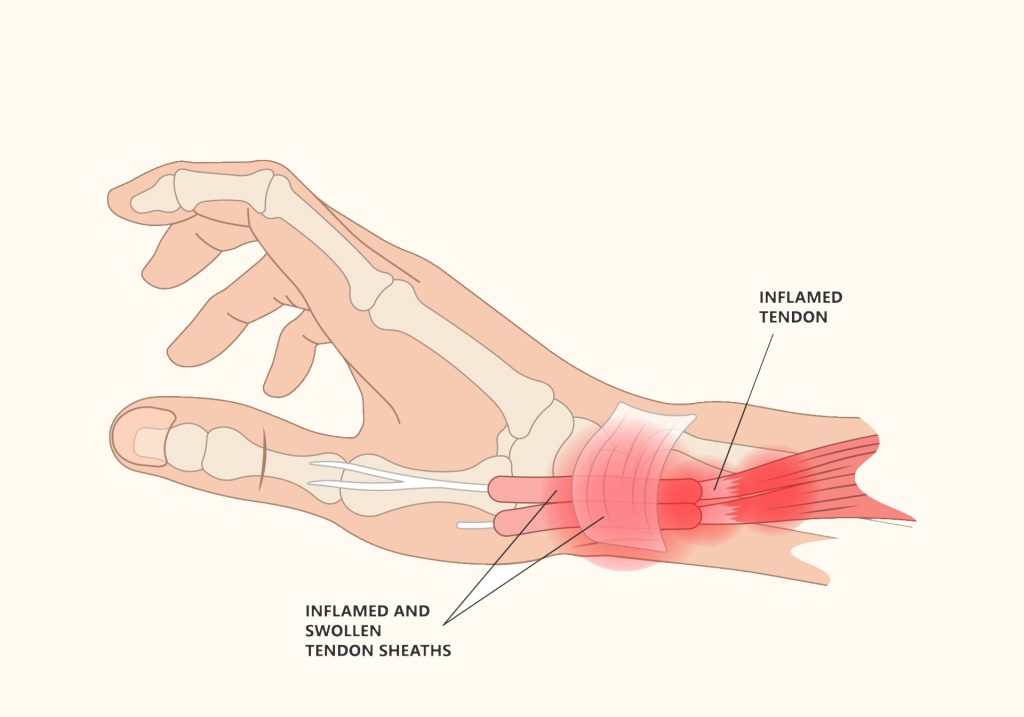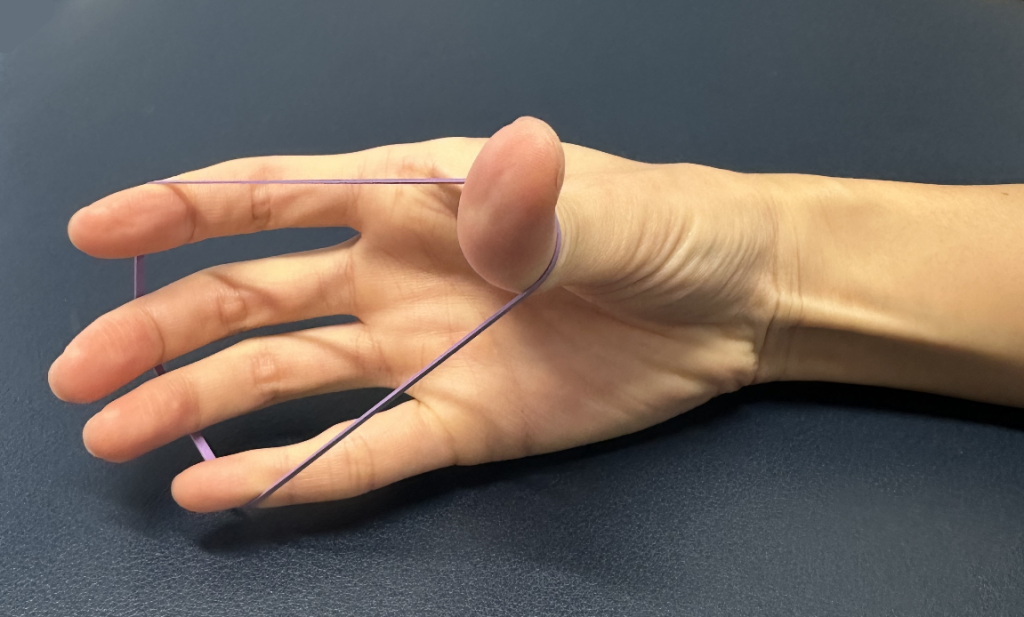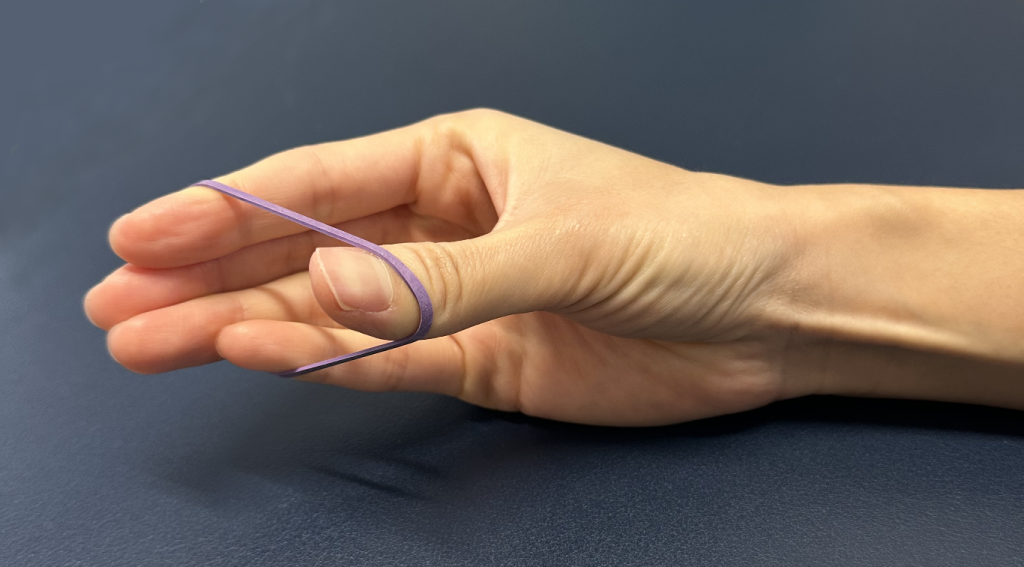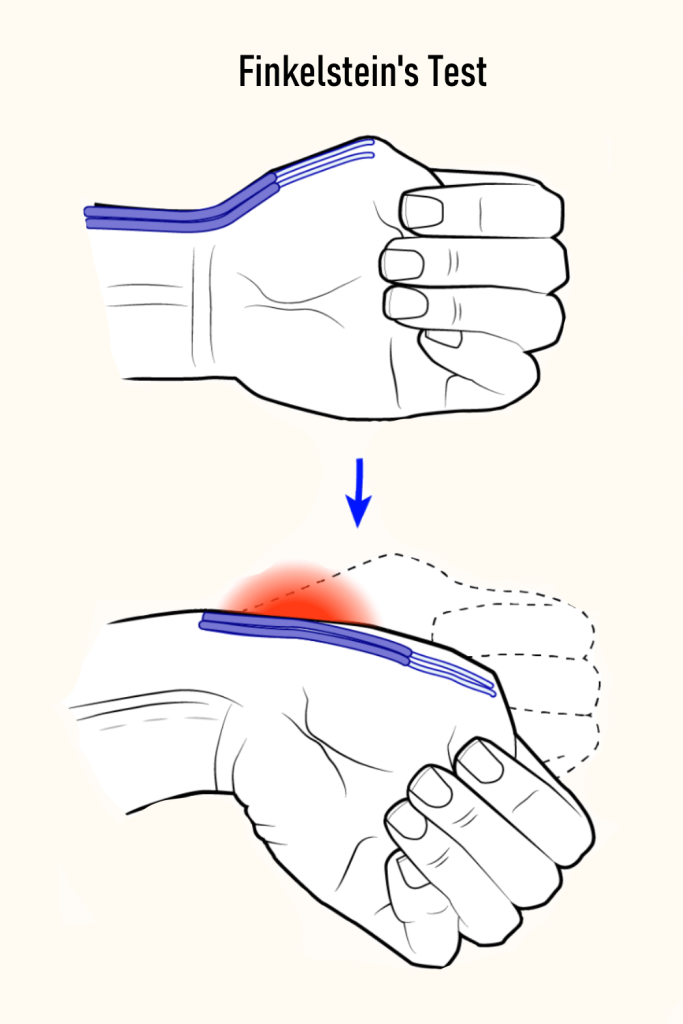Have you been experiencing sharp or aching pain near the base of your thumb, especially when gripping or twisting objects? You might be dealing with De Quervain’s tenosynovitis — a common but often misunderstood condition that affects the tendons in your wrist. At Movement Science, we believe in empowering our patients with knowledge, so let’s take a closer look at what causes this condition, how it’s diagnosed, and what you can do to treat it effectively.
 What is De Quervain’s Tenosynovitis?
What is De Quervain’s Tenosynovitis?
De Quervain’s Tenosynovitis is a painful condition that occurs when the tendons on the thumb side of your wrist become inflamed.
This inflammation restricts movement and causes discomfort.
How is it Diagnosed?
Diagnosis typically involves a physical examination and may include:
Finkelstein’s test: A common test where the patient makes a fist with the thumb inside the fingers and bends the wrist towards the little finger. If it causes pain on the thumb side of the wrist, it indicates De Quervain’s Tenosynovitis.
Ultrasound or MRI: These imaging tests may be used to visualize inflammation in the tendons and confirm the diagnosis.
Pain: Sharp pain along the thumb side of the wrist, especially when moving the thumb or wrist.
Swelling: Visible swelling near the base of the thumb.
Tenderness: Sensitivity to touch or pressure along the affected tendons.
Difficulty gripping: Difficulty performing activities that require pinching or gripping, such as holding a phone or lifting an object.
Limited motion: Pain that worsens with thumb and wrist movements.
How Can You Prevent or Manage De Quervain’s Tenosynovitis?
Proper Posture: Pay attention to your wrist posture during activities like lifting objects, carrying items, or handling everyday tasks. Avoid awkward wrist positions that can cause strain, as these can contribute to conditions like De Quervain’s tenosynovitis.
Rest and Ice: If you’re experiencing pain, rest and ice the affected area to reduce inflammation.
 Medications: Nonsteroidal anti-inflammatory drugs (NSAIDs) like ibuprofen can help reduce pain and swelling.
Medications: Nonsteroidal anti-inflammatory drugs (NSAIDs) like ibuprofen can help reduce pain and swelling.
Physical Therapy: If the pain persists, physical therapy can help. A therapist can guide you through specific exercises to improve wrist mobility and strength.
Corticosteroid injections: If symptoms are severe or persistent, corticosteroid injections can reduce inflammation.
Surgery: In rare cases, if conservative treatments fail, surgery may be recommended to release the tendon sheath.
Get Back to Pain-Free Movement with Movement Science
De Quervain’s tenosynovitis can be frustrating and painful, but the good news is — with the right approach, it’s highly treatable. Whether you’re at the early stages or have been struggling for a while, our team at Movement Science is here to help you find relief and regain full function. From personalized therapy to evidence-based treatment plans, we’re committed to helping you move better, live better.
Got questions or looking for help? Give Movement Science a call at 8540 7319 or book online — your journey to pain-free movement starts here.


